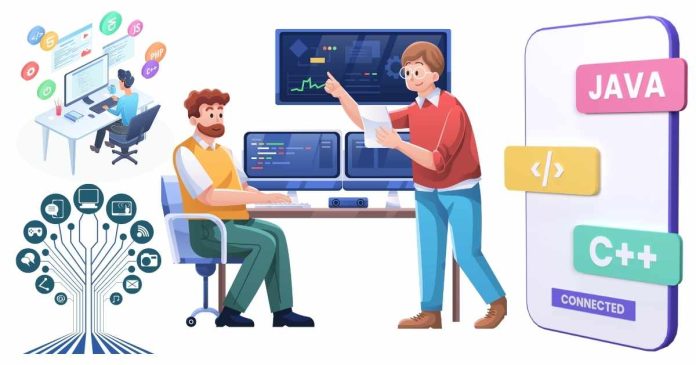Software is a set of instructions, data, or programs used to operate computers and execute specific tasks. It is the intangible component of a computer system, as opposed to the physical hardware. Software acts as a bridge between the user and the computer’s hardware, allowing users to interact with the machine and perform various operations.
In simpler terms, software refers to the programs and applications that run on a computer or any other device to accomplish specific goals.
Definition of Software
Software can be defined as:
“A COLLECTION OF PROGRAMS, PROCEDURES, ALGORITHMS, AND RELATED DOCUMENTATION THAT PERFORM SPECIFIC TASKS ON A COMPUTER SYSTEM.”
The software cannot be touched or physically manipulated; it exists in a virtual or digital format and is stored electronically.
Types of Software
Software can be broadly categorized into three main types:
1. System Software
System software manages and controls the hardware components of a computer and provides a platform for other software to run. It acts as a mediator between hardware and user applications.
Examples of System Software:
- Operating Systems (OS): Windows, macOS, Linux, Android, iOS.
- Utility Software: Disk management tools, antivirus programs, file management tools.
- Firmware: Software embedded into hardware devices like routers or printers.
2. Application Software
Application software is designed for end-users to perform specific tasks or solve problems. These programs are often user-friendly and cater to the needs of individuals or businesses.
Examples of Application Software:
- Productivity Tools: Microsoft Office, Google Workspace.
- Media Players: VLC Media Player, Spotify.
- Web Browsers: Google Chrome, Mozilla Firefox, Safari.
- Social Media Apps: Instagram, Facebook, WhatsApp.
- Games: Fortnite, Minecraft, Call of Duty.
3. Development Software
Development software, also known as programming software, provides tools for developers to write, test, and maintain code. It supports the creation of other types of software.
Examples of Development Software:
- Text Editors: Visual Studio Code, Sublime Text, Notepad++.
- Compilers and Debuggers: GCC, JDK, IntelliJ IDEA.
- Integrated Development Environments (IDEs): Eclipse, PyCharm, NetBeans.
- Version Control Tools: Git, GitHub, Bitbucket.
Examples of Popular Software
1. Microsoft Word
- Type: Application software (Productivity).
- Purpose: Used for creating, editing, and formatting documents.
2. Google Chrome
- Type: Application software (Web Browser).
- Purpose: Allows users to browse the internet.
3. Windows 11
- Type: System software (Operating System).
- Purpose: Manages computer hardware and provides a platform for applications.
4. Android Studio
- Type: Development software (IDE).
- Purpose: Used for developing Android applications.
5. Adobe Photoshop
- Type: Application software (Creative Tool).
- Purpose: Used for editing and designing graphics or photos.
How is Software Created?
Software is developed through a structured process called the Software Development Life Cycle (SDLC). The steps include:
- Requirement Analysis: Identifying the needs of users or businesses.
- Design: Creating a blueprint of the software.
- Coding: Writing the software code using programming languages like Java, Python, or C++.
- Testing: Ensuring the software is free from errors and meets user expectations.
- Deployment: Delivering the software to users.
- Maintenance: Regular updates and bug fixes to improve functionality.
Key Characteristics of Software
- Intangible: Unlike hardware, software cannot be touched or physically handled.
- Customizable: Software can be tailored to meet specific requirements.
- Scalable: Software can be upgraded or modified to handle larger tasks or users.
- Error-Prone: Poorly written software may contain bugs or security vulnerabilities.
- Lifecycle: Software requires regular updates and maintenance.
Importance of Software
- Automation: Software automates repetitive tasks, saving time and reducing errors.
- Communication: Tools like email and video conferencing enable global connectivity.
- Business Operations: Software supports critical business functions like inventory management, payroll, and customer relationship management (CRM).
- Entertainment: Games, streaming services, and social media applications provide entertainment.
- Education: E-learning platforms like Coursera and Duolingo make education accessible to all.
Software plays an essential role in the modern world by enabling devices to function and empowering users to perform a wide range of tasks. From operating systems that power computers to applications that connect people, software is at the core of technological progress. With the continuous evolution of technology, the importance of software in our daily lives will only grow, driving innovation and productivity across industries.


